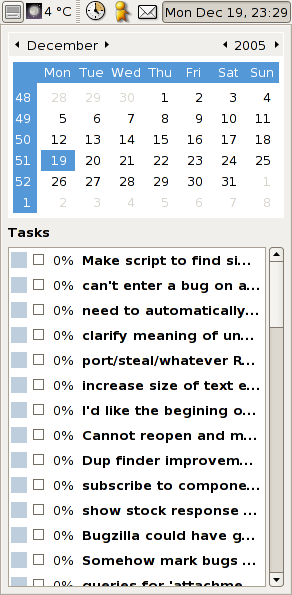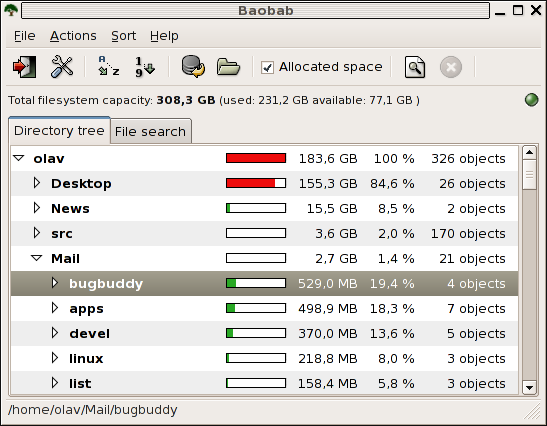Yesterday I did an initial investigation to find out why NewsBruiser (software behind blogs.gnome.org) is so slow. Put a copy of blogs.gnome.org on my machine so I can hack it without breaking stuff. Did a profile of NewsBruiser as it served an image. Result:
133023 function calls (130602 primitive calls) in 2.150 CPU seconds
Ordered by: internal time
List reduced from 935 to 100 due to restriction
ncalls tottime percall cumtime percall filename:lineno(function)
139 0.230 0.002 0.860 0.006 Notebook.py:643(readConfiguration)
6526 0.120 0.000 0.200 0.000 IWantOptions.py:154(getOption)
402/71 0.110 0.000 0.380 0.005 sre_parse.py:374(_parse)
9198 0.110 0.000 0.110 0.000 :0(append)
15077 0.110 0.000 0.110 0.000 string.py:351(find)
747/67 0.100 0.000 0.250 0.004 sre_compile.py:27(_compile)
6630 0.090 0.000 0.090 0.000 :0(replace)
6526 0.070 0.000 0.110 0.000 Options.py:42(isThemed)
1062/384 0.070 0.000 0.080 0.000 sre_parse.py:140(getwidth)
6459 0.060 0.000 0.170 0.000 util.py:59(replaceBaseURLs)
4511 0.050 0.000 0.070 0.000 sre_parse.py:182(__next)
6543 0.050 0.000 0.050 0.000 :0(getattr)
There is a lot of stuff in there. Decided that starting with at the top was the best (readConfiguration). Initially I only looked at cumtime. Should have looked at ncalls and percall as that would have saved me some time. readConfiguration uses code to parse a handmade configuration file. Would be better if it just used some config file supported by Python (better chance that it is implemented in C or Python and optimized for speed). Thought about using a pickle file as a cache.
At this point I decided to learn abit more about NewsBruiser and the interaction between all the classes/files. Looked into all the stuff NewsBruiser does before it actually transmits the image. NewsBruiser actually reads (using not-speedy Python code) the configuration files of every blog within blogs.gnome.org (which I could have known earlier by looking at ncalls). Meaning, if more blogs are added to blogs.gnome.org, it slow down because of that. Grr. Added a quick hack to delay loading the config file until something wanted to access the config. Didn’t work. Seems the ordering of a blog is stored as a number in the config file and NewsBruiser really wants that. Not good. Looked at the ncalls vs the number of blogs. We do not have that many blogs. Seems that ResourceAbuser reads those configuration files twice.
If I avoid 138 readConfiguration calls, the cumtime would drop to 0.006, saving 0.854 secs out of the 2.150 CPU seconds. Pretty good for an initial investigation. Saw a tip in the NewsBruiser documentation for increasing the performance. There goes my my assumption that the developer just did not care about performance issues.
Although I’m investigating how I can optimize the NewsBruiser image serving this is not my goal. Images should be served by Apache (statically). Using a Python script to do that is stupid. The reason why I’m still investigating how NewsBruiser serves images because I want to understand why it isn’t faster. It should be like: 1) locate file, 2) read file 3) push content to stdout. Reading the configuration files of other blogs twice is not one of the things that should be part of this.


